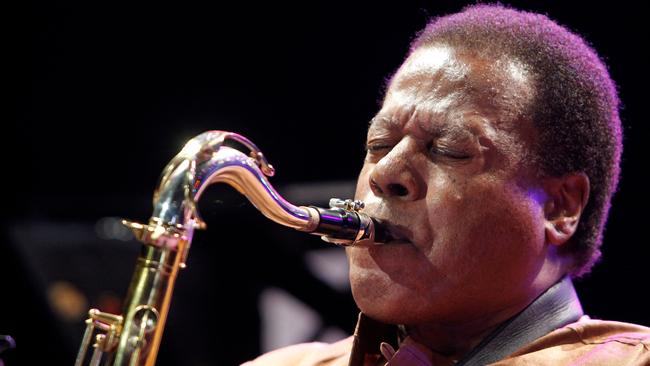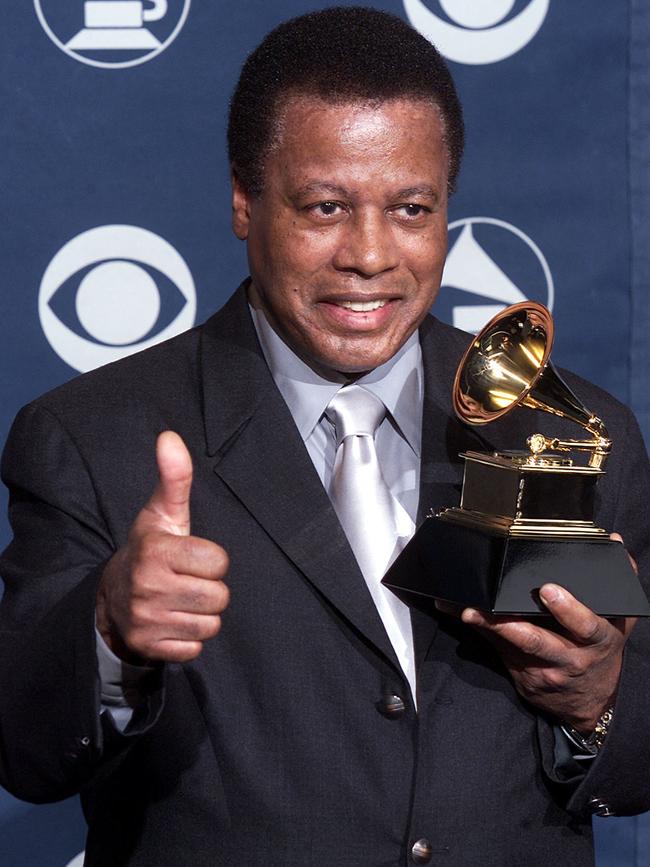Wayne Shorter pioneered and popularised jazz-rock fusion
Saxophone great Wayne Shorter made his name with Miles Davis in the 1960s and went on to invent jazz fusion with Weather Report in the 1970s.

As a young jazz saxophonist who combined a virtuosic technique with a fecund musical imagination, Wayne Shorter was known as “Mr Gone”.
The nickname was conferred for his distant, detached air, as if his mind was on more elevated matters than our corporeal presence on this earth.
“If you ask Wayne the time he’ll start talking about the cosmos and how time is relative,” a fellow musician remarked.
Yet in a way it could be applied to his music-making too, which he claimed was nothing less than an attempt “to create how you wish the world to be for eternity; taking off the layers and becoming what we really are”.
Shorter could blow his sax as hard as anyone when needed, but whether he was fearlessly taking jazz to places it had never been before with Miles Davis’s band, inventing a new and eclectic style of fusion with Weather Report, or lending his richly nuanced tones to pop records by Joni Mitchell, Steely Dan and Carlos Santana, there was something enigmatic and otherworldly about his playing.
Famed English music writer Richard Williams eloquently described his “real gone” sound as “curling gracefully around the musical furniture before evaporating as mysteriously as it had appeared, leaving an indelible after-image”.
A musician of boundless intellectual curiosity, he played bebop and free jazz, and everything in between, but throughout his career he refused to be tied to any single tradition.
With the acoustic quartet bearing his name, which he led for the last two decades of his life, he played a repertoire that mixed his own compositions with interpretations of Villa-Lobos, Sibelius and Mendelssohn, folk songs and medieval madrigals.
He was once asked to define jazz. “The word to me only means ‘I dare you’ and ‘do you have the guts to do it?’,” he replied.
He retired from live performances in 2018 due to ill-health but was still composing in his 90th year. His later works included Gaia, a symphonic tone poem commissioned by the Los Angeles Philharmonic, and Emanon, a suite he recorded with the Orpheus Chamber Orchestra and which won a Grammy as best jazz instrumental recording in 2019.
His music was influenced by his Buddhist faith, which helped him to deal with a number of personal tragedies. Iska Maria, his daughter from his second marriage to Ana Maria Patricio, died of a seizure at the age of 14 in 1986. A decade later Ana Maria and his niece, Dalila, were among the 230 passengers killed when TWA Flight 800 crashed off the coast of Long Island 12 minutes after taking off from JFK Airport.
In 1999 he married his late wife’s close friend, Carolina Dos Santos. She survives him, along with his daughter, Miyako, from his first marriage to Teruko Nakagami, which ended in divorce in 1966.

Several of his best-known compositions, including Infant Eyes and Miyako, were dedicated to their daughter.
Shorter claimed that through his Buddhist faith he maintained an “eternal dialogue” with his second wife and heard her voice when he was composing, telling him “Don’t repeat, do something different”.
He was the younger son of Louise, a seamstress, and Joseph Shorter, who worked as a welder for the Singer sewing machine company. As a boy he attended a local Baptist church, where a young Sarah Vaughan often sang.
At 12 he won a citywide painting competition that led to him attending Newark Arts High School and it wasn’t until he was 15 that he discovered jazz. With his father’s encouragement he took clarinet lessons, while older brother Alan took up the trumpet.
After seeing the big bands of Duke Ellington and Count Basie when they played in Newark, he switched to saxophone, inspired by Charlie Parker, whose complex and technically challenging solos he tried to copy from 78rpm records.
To pay the tuition fees for a music course at New York University his father got him a job at the Singer factory, where he spent a year saving his wages before he landed in Manhattan in 1953. He was just in time to hear Parker in the city’s nightclubs at the height of his powers before his death at the age of 34, and became friends with John Coltrane, a fellow saxophonist seven years his senior who was about to join Miles Davis’s quintet.
On graduation in 1956 Shorter was drafted into the US Army but his posting to Fort Dix 100km south of New York was close enough for him to make weekend journeys to Manhattan’s jazz clubs.
On his discharge two years later he joined trumpeter Maynard Ferguson’s band, the line-up of which also included his future Weather Report bandmate, Joe Zawinul. He soon moved on to join Art Blakey’s Jazz Messengers. His four-year stay established him as the most exciting young saxophonist to emerge since Coltrane.
He was headhunted by Davis, who had been struggling to find a successor to Coltrane, who had left his band in 1960.
After turning down several entreaties, Shorter eventually agreed to leave the Jazz Messengers in 1964 and the six years he spent with Davis were to change the sound and direction of jazz forever. “Wayne, do you get tired of playing music that sounds like music?” the bandleader provocatively asked him.
Stimulated by such comments, his playing was liberated to become freer and more ambitious, and the brilliant new iteration of Davis’s quintet, which also included Herbie Hancock, Ron Carter and Tony Williams, provided a perfect context. In his autobiography Davis called Shorter “the conceptualiser of a whole lot of musical ideas we did”.
With Davis he moved on to create an audacious electrified jazz-rock fusion on the albums In a Silent Way and Bitches Brew. On the latter he was joined by John McLaughlin, Chick Corea and Zawinul, and from that cast came the Mahavishnu Orchestra, Return to Forever and Weather Report. Together with the Headhunters led by Hancock, these four bands dominated jazz for a decade.
By the time Weather Report broke up in 1986, Shorter was first call when rock stars wanted a little jazz saxophone on their recordings. He played on 10 Joni Mitchell albums from 1977. “You’re playing like you have a paintbrush,” Mitchell told him.
Wayne Shorter. Saxophonist. Born Newark, New Jersey, August 25, 1933; died Los Angeles, March 2, aged 89.
The Times


